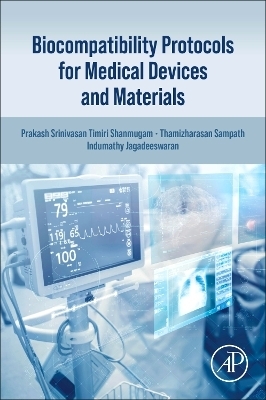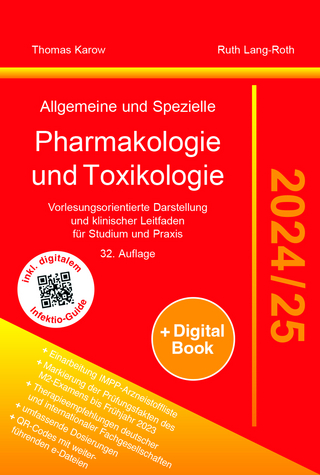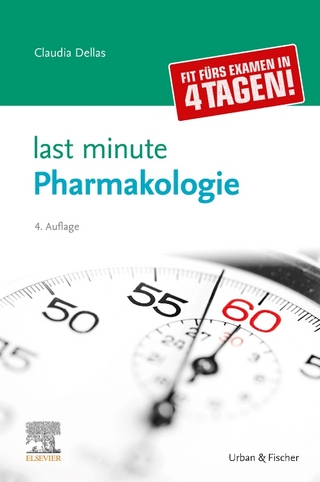
Biocompatibility Protocols for Medical Devices and Materials
Academic Press Inc (Verlag)
978-0-323-91952-4 (ISBN)
Biocompatibility Protocols for Medical Devices and Materials is a practical guide that provides step-by-step toxicological protocols ranging from materials selection to data interpretation for toxicologists, biomedical researchers, healthcare professionals, product developers, and others working in risk assessment and safety analysis of medical devices.
Prakash Srinivasan Timiri Shanmugam, PhD, is currently a Senior Toxicologist at Avanos Medical, Inc. in Alpharetta, Georgia. He was previously contracted as an SME–Biocompatibility at Baxter International, Inc. in Round Lake, IL, United States, and at Johnson & Johnson Medical Device Sector. He has an MSc and a PhD in the specialization of Pharmacology and Toxicology with Chemistry (interdisciplinary) from the University of Madras, Tamil Nadu, and completed his postdoctoral research at Tulane University and LSUHSC-Shreveport, Louisiana. He has authored 5 books, contributed several book chapters, and published research articles in various peer-reviewed international journals and conference proceedings/abstracts. Thamizharasan Sampath, PhD, PGDCR, is currently Dean of Research and Professor of Pharmacology & Toxicology at the University of Health Sciences (SBIMS), Raipur, CG, India. He has done his MS and PhD specializing in pharmacology under the faculty of medicine from the Post Graduate Institute of Basic Medical Sciences, University of Madras, and also did his Postgraduate diploma in clinical research at State University. He has 17 years of teaching and research experience. His research areas include cancer pharmacology, clinical research, neurotoxicology, nutraceuticals, reproductive toxicology, endocrine pharmacology, phytopharmacology, molecular pharmacology, drug design, and drug discovery. He has published more than 60 research articles in national and international indexed journals and is the author of the book Bamboo - The Golden seed and has also contributed more than 20 book chapters. He has received many awards from various central organizations for his outstanding research and contribution in the field of medicine. He serves as a Chief Editor, Editorial Board Member, and Reviewer in many medical journals. He is a member of Institutional Research Ethics Committee, Animal Ethics Committee, Indian Pharmacological Society, and UNESCO Bioethics Committee. Indumathy Jagadeeswaran, PhD, is currently working as a Senior Research Associate in the Department of Pediatrics at UT Southwestern Medical Center, Dallas, Texas, United States. She has an MS in Biotechnology with Biochemistry (interdisciplinary) and PhD in Medical Physiology from the Jawaharlal Institute of Postgraduate Medical Education and Research (JIPMER) in Pondicherry, India. She has been working in the field of physiology since 2011 and has completed her postdoctoral training from prestigious institutes including the UT Southwestern Medical Center, Dallas, Texas. She has editorial experience including being an Associate Editor (2014–2017) for a peer-reviewed international journal and is presently a Peer-Review Member of the Scientific Committee and Society. She has contributed book chapters on regulatory standards and has also published research articles in various peer-reviewed international journals.
Contributors Author bios Introduction
1.Cytotoxicity Prakash Srinivasan Timiri Shanmugam, Thamizharasan Sampath, Indumathy Jagadeeswaran, Sandhiya Thamizharasan, Safura Fathima and Krithaksha V.
Introduction ISO 10993-5 Cytotoxicity Detection methods Test by indirect contact Quantitative method Abbreviations References
2. Sensitization Prakash Srinivasan Timiri Shanmugam, Thamizharasan Sampath, Indumathy Jagadeeswaran, Sandhiya Thamizharasan and Safura Fathima
Introduction ISO 10993-10 Test methods Guinea pig tests Guinea pig tests and sensitization potency assessment Guinea pig maximization and Buehler tests Open epicutaneous test Advantages and limitations Local lymph node assay The LLNA and sensitization potency assessment Advantages and limitations Human skin-sensitization testing Advantages and limitations Application of test methods in risk assessment Guinea pig tests Local lymph node assay Human repeat-insult patch test Abbreviation References
3. Irritation test Prakash Srinivasan Timiri Shanmugam, Thamizharasan Sampath and Indumathy Jagadeeswaran
Introduction Selection of animals Test procedure Alternative methods In vitro tests methods for irritation References
4. Material-mediated pyrogenicity Prakash Srinivasan Timiri Shanmugam, Thamizharasan Sampath, Indumathy Jagadeeswaran, Sandhiya Thamizharasan and Safura Fathima
Introduction Broad range of pyrogens Tests using fluid extracts Selection of animal species Animal status Animal care and husbandry Size of groups Number of groups Treatment controls Route of exposure Test sample administration Pyrogen tests LAL test Rabbit test: sham test (in vivo) Interpretation of results Monocyte activation test (in vitro test) Procedure of MAT Advantages Abbreviations References
5. Acute systemic toxicity Prakash Srinivasan Timiri Shanmugam, Thamizharasan Sampath and Indumathy Jagadeeswaran
Introduction Considerations Acute systemic toxicity Selection of animals Animal status Animal care and husbandry Size and number of groups Routes of exposure Dosing Body weight and food/water consumption Clinical observations Clinical pathology Anatomic pathology Evaluation criteria Final report References
6. Repeated-exposure systemic toxicity (subacute, subchronic, and chronic systemic toxicity) Prakash Srinivasan Timiri Shanmugam, Thamizharasan Sampath, Indumathy Jagadeeswaran and Harini Sriram
Introduction Animal care and husbandry Size and number of groups Routes of exposure Dosing Clinical observations Clinical pathology Anatomic pathology Evaluation criteria Final report References
7. Implantation Prakash Srinivasan Timiri Shanmugam, Thamizharasan Sampath and Indumathy Jagadeeswaran
Introduction Selection of animals Test procedure References
8. Hemocompatibility Prakash Srinivasan Timiri Shanmugam, Thamizharasan Sampath, Indumathy Jagadeeswaran, Krithaksha V., Vinod P. Bhalerao and Sandhiya Thamizharasan
Highlights Introduction Types of devices in contact with blood Characterization of blood interactions Categories of tests and blood interactions Preclinical evaluation of cardiovascular devices and prostheses Advantages and limitations of animal and in vitro testing Laboratory testsdprinciples, scientific basis, and interpretation Evaluation of hemolytic properties of medical devices and their components Hemolysis testingdgeneral considerations Abbreviations References
9. Tests for genotoxicity Prakash Srinivasan Timiri Shanmugam, Thamizharasan Sampath, Indumathy Jagadeeswaran and Harini Sriram
Introduction Requirements Genotoxicity Example test method: mouse lymphoma mutagenesis assay Evaluation criteria Results Conclusion References
10. Carcinogenicity Prakash Srinivasan Timiri Shanmugam, Thamizharasan Sampath, Indumathy Jagadeeswaran, Safura Fathima and Sandhiya Thamizharasan
Introduction Carcinogenicity test-specific considerations Abbreviations References
11. Reproduction toxicity Prakash Srinivasan Timiri Shanmugam, Thamizharasan Sampath, Indumathy Jagadeeswaran, Sandhiya Thamizharasan and Safura Fathima
Introduction Principle of the test Description of the method Procedure Data and reporting Abbreviations References
12. Toxicokinetics Prakash Srinivasan Timiri Shanmugam, Thamizharasan Sampath, Indumathy Jagadeeswaran, Vinod P. Bhalerao, Sandhiya Thamizharasan, Krithaksha V. and Jayanta Saha
Introduction Principles for design of toxicokinetic studies Guidance on test methods Toxicokinetic study sampling Toxicokinetic study report Guidance on specific types of test Absorption Distribution Metabolism and excretion Abbreviations References
13. Data leverage Prakash Srinivasan Timiri Shanmugam, Thamizharasan Sampath and Indumathy Jagadeeswaran
Introduction Leverage from literature Leverage from Threshold of Toxicological Concern (TTC) Leverage from reviewed devices Leverage from vendors testing References
14. Chemical characterization Prakash Srinivasan Timiri Shanmugam, Thamizharasan Sampath, Indumathy Jagadeeswaran, Sandhiya Thamizharasan and Krithaksha V.
Introduction Why characterize materials? Chemical characterization Material characterization Plasticizers Sterilization techniques used for medical devices Corrosion Extractables and leachables Set up a chemical characterization study Conclusion References
15. Biological evaluation report Prakash Srinivasan Timiri Shanmugam, Thamizharasan Sampath and Indumathy Jagadeeswaran
Contents Index
| Erscheinungsdatum | 17.04.2023 |
|---|---|
| Verlagsort | Oxford |
| Sprache | englisch |
| Maße | 152 x 229 mm |
| Gewicht | 430 g |
| Themenwelt | Studium ► 2. Studienabschnitt (Klinik) ► Pharmakologie / Toxikologie |
| Studium ► Querschnittsbereiche ► Prävention / Gesundheitsförderung | |
| ISBN-10 | 0-323-91952-9 / 0323919529 |
| ISBN-13 | 978-0-323-91952-4 / 9780323919524 |
| Zustand | Neuware |
| Haben Sie eine Frage zum Produkt? |
aus dem Bereich


